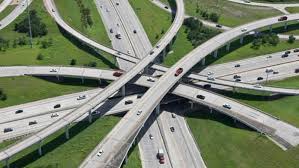
A new and latest study by the McKinsey Global Institute finds that since the financial crisis of 2008-09, investments in the infrastructure sector globally, including the U.S., despite a crying need for better infrastructure form business and citizens alike.
Amidst this environment of investment, roads, bridges, sewers, and everything else that makes a country run is finding robust investments in China, both by the private sector and the government.
"China spends more on economic infrastructure annually than North America and Western Europe combined," according to the report that was published by the agency earlier this week.
Since the global interest rates are super-low and the global economy could use the spending jolt, economists around the world have been arguing that now is a great time to invest in infrastructure.
"Is anyone proud of Kennedy airport?" Harvard University economist Lawrence Summers likes to ask.
Infrastructure spending as a share of gross domestic product from 2008 to 2013 has fallen in ten countries, notes the MGI report. These economies include the U.S., U.K., Italy, Australia, South Korea, Brazil, India, Russia, Mexico, and Saudi Arabia.
In this study, the European Union is treated as a separate entity and hence the study counts only 11 economies.
Infrastructure spending as a share of GDP has grown in Japan, Germany, France, Canada, Turkey, South Africa, and China in sharp contrast to the widespread declines in spending in the sector elsewhere.
Chart that was displayed in the report by MGIO clearly finds the bar for China in terms of investments in infrastructure to be the highest among all the major world economies. In contrast to the Chinese spending, the US economy is wider but with a lower growth in investments.
However, economists also have warned of such a thing as too much infrastructure spending. Citing examples, the McKinsey & Company-affiliated think tank says that China, Japan, and Australia are likely to exceed their needs between now and 2030 if the countries continue to invest at the current rates of investment.
Measures such as raising user charges such as highway tolls, among other measures is favored in the report to generate more finds for public infrastructure. The report by MGI argues for giving investors "the ability to charge prices that produce an acceptable risk-adjusted return" and for increasing "regulatory certainty" to help in encouraging more private investment in infrastructure.
(Source:www.bloomberg.com)
Amidst this environment of investment, roads, bridges, sewers, and everything else that makes a country run is finding robust investments in China, both by the private sector and the government.
"China spends more on economic infrastructure annually than North America and Western Europe combined," according to the report that was published by the agency earlier this week.
Since the global interest rates are super-low and the global economy could use the spending jolt, economists around the world have been arguing that now is a great time to invest in infrastructure.
"Is anyone proud of Kennedy airport?" Harvard University economist Lawrence Summers likes to ask.
Infrastructure spending as a share of gross domestic product from 2008 to 2013 has fallen in ten countries, notes the MGI report. These economies include the U.S., U.K., Italy, Australia, South Korea, Brazil, India, Russia, Mexico, and Saudi Arabia.
In this study, the European Union is treated as a separate entity and hence the study counts only 11 economies.
Infrastructure spending as a share of GDP has grown in Japan, Germany, France, Canada, Turkey, South Africa, and China in sharp contrast to the widespread declines in spending in the sector elsewhere.
Chart that was displayed in the report by MGIO clearly finds the bar for China in terms of investments in infrastructure to be the highest among all the major world economies. In contrast to the Chinese spending, the US economy is wider but with a lower growth in investments.
However, economists also have warned of such a thing as too much infrastructure spending. Citing examples, the McKinsey & Company-affiliated think tank says that China, Japan, and Australia are likely to exceed their needs between now and 2030 if the countries continue to invest at the current rates of investment.
Measures such as raising user charges such as highway tolls, among other measures is favored in the report to generate more finds for public infrastructure. The report by MGI argues for giving investors "the ability to charge prices that produce an acceptable risk-adjusted return" and for increasing "regulatory certainty" to help in encouraging more private investment in infrastructure.
(Source:www.bloomberg.com)





